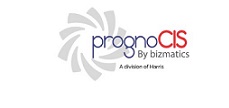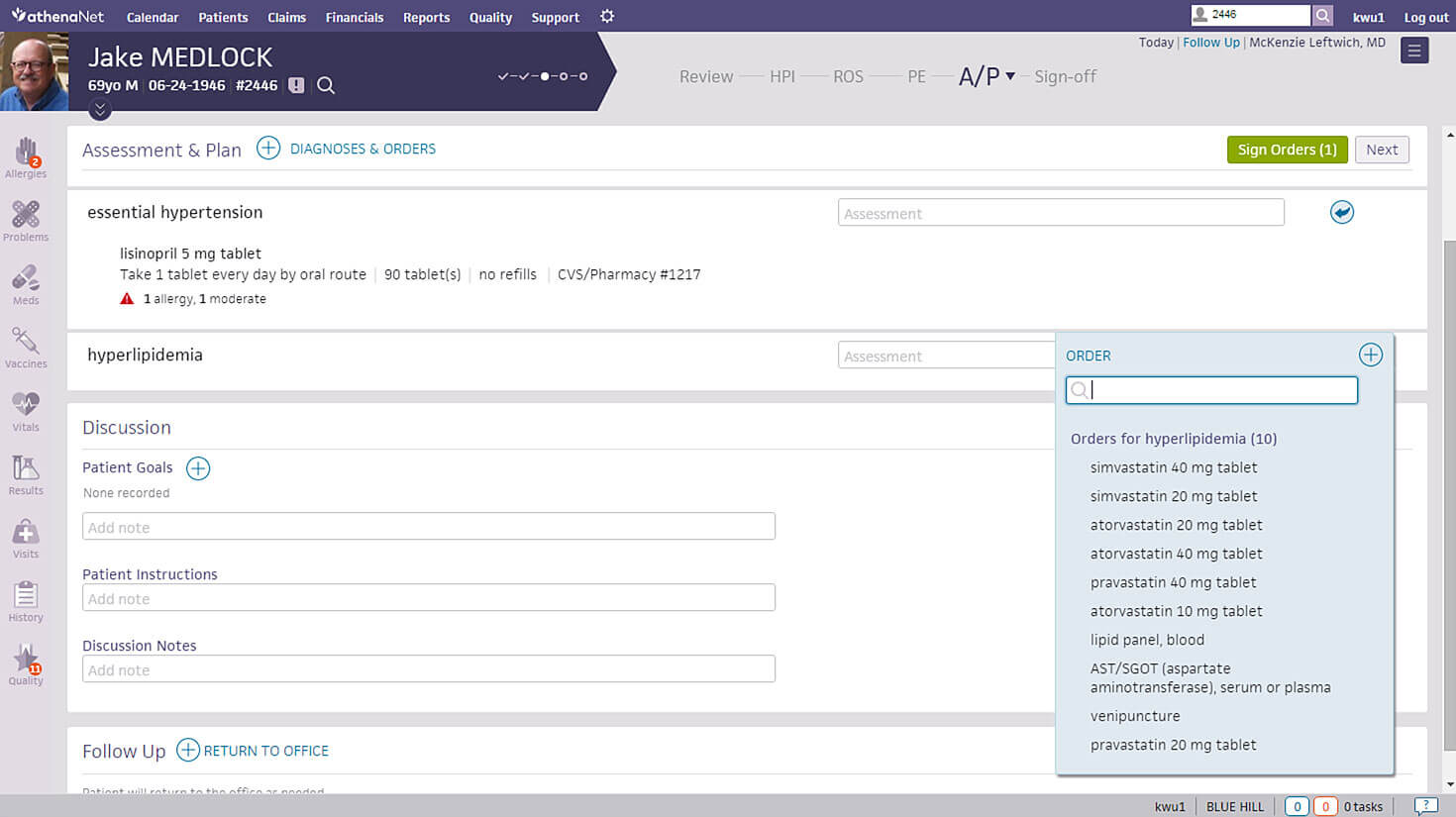What is Enterprise Medical Software?
Clinics, private practices, hospitals, and other enterprise medical organizations need specific Electronic Medical Records (EMR) software that can aid thousands of providers and practitioners. An Enterprise EMR Software is designed to cater to the needs of huge healthcare organizations like acute care clinics and hospitals, rehab centers, large multi-specialty practices etc.
Types of Enterprise Medical Software
There are following two types of an Enterprise Medical Software:
Administrative Enterprise Medical Software
An Administrative Medical Software is like a Practice Management and EMR Software. It is used to cater to the administrative needs of a healthcare organization.
To have a good understanding of how a software works, it is advisable to learn about the different features and functionalities of the software. Before choosing an Administrative Enterprise Medical Software, we should check if the software has the following key features:
Provider Scheduling – The software should also offer provider schedule. It helps in the electronic assignment of providers to various shifts, departments, patients, etc.
Patient Registration – The software should be able to register all the patents online. Other than that it should be able to verify all the patient details and medical history.
Patient Scheduling – The Enterprise Electronic Medical Records Software must schedule patient appointments and should allow electronic booking for the ease of both the physicians and the patients.
Inventory Management – The software should be able to manage inventory. The tracking of the records of medical supplies and equipment should be done by the Administrative Enterprise Medical Software.
Human Resources – The software must offer the electronic management of HR functions, including time and staff attendance management, benefits and deductions of staff, and payroll etc.
Claims/Billing – The software should allow electronic submission of claims to insurance companies, Medicare, Medicaid, and invoice generation for collections of charges from the patients.
Analytics/Reporting – The Administrative Enterprise Medical Software should offer health informatics and the optimization of data attainment, storage, recovery, and reporting for various initiatives, such as the physician quality reporting system (PQRS).
Clinical Enterprise Medical Software
The Clinical Enterprise Medical Software manages the clinical side of healthcare organizations and includes more functionality than a simple Electronic Health Records Software.
To have a good understanding of how a software works, it’s advisable to learn about the different features and functionalities of the software. Before choosing a Clinical Enterprise Medical Software, we should check if the software has the following key features:
Physician Notes/Orders – The Clinical Enterprise Medical Software should support electronic input, editing, communication, and storage of progress, and doctor orders. The new systems support several input methods, including traditional mouse/keyboard, voice dictation, or touch controls.
Problem Lists – The software should create and manage patient complaints and should allow the assignment of the corresponding ICD codes.
Nursing Assessments – The software must support the electronic input, editing, and verification of nurse notes and orders.
e-prescribing – For quicker prescription processing and renewal, e-prescribing creates an interface that allows practitioners to prescribe, change prescriptions and renew prescriptions with a touch of a button. Electronic prescribing is a must for Clinical Enterprise Medical Software.
Lab integration – The software should be able to integrate lab results so they show up immediately without any hassle or wait. They are immediately recorded in their respective patient’s folder as well making the whole task less stressful and much more organized. This is a must for the Clinical Enterprise Medical Records Software.
Notes and Templates – Specialty-specific SOAP notes and templates according to the needs of the specialty should be added. In the case of Clinical Enterprise Medical Software, the templates for all the specialties that fall under the domain of Enterprise Medical Software should be added. All these templates should be customizable.
What You Need To Know About An Enterprise Medical Software
Overview
Enterprise Medical Electronic Medical Records Software is the electronic method of storing huge amounts of medical records for patients. Using specially designed software, physicians and other medical professionals can store anything ranging from patient demographics to extensive clinical information about patients, such as medical history, social history, lab reports and more.
EHR Software by Specialty
Since all medical providers (MDs, DOs, PAs, NPs, LCSW, OT etc.) work in a distinct manner based on their background and medical specialty, EMR Software or EHR Software must accommodate the unique style and documentation requirements. Examples of such specialty-specific features include the ability to annotate on images or capability to store before/after photos for Pain Management specialists and Dermatology specialists respectively. Similarly, other specialties such as Pediatrics, Oncology, Podiatry, Ophthalmology, Neurology, Nephrology, Dialysis Centers, Rheumatology and Chiropractic Care require their unique set of specialty-specific features to simplify adoption.
Meaningful-Use
Since the introduction of the HITECH Act, healthcare IT has undergone a massive transition starting from the widely recognized Meaningful Use program to what is now known as MACRA, the Medicare EHR Incentive Program. The Meaningful Use program has transformed and now formed part of the four components of the new Merit-Based Incentive Payment System (MIPS), which itself is a fundamental part of MACRA.
For some medical practices, the transition from paper-based records to EHR Software (Electronic Medical Records Software) has not been a simple one. Regardless, realizing that the benefits of utilizing ONC Certified EMR Software far outweigh the hassle and challenges associated with it – ensuring a viable future, most practices today have successfully transformed their clinical and administrative operations to EMR Software.
EMR Software Benefits
Aside from ensuring tangible financial incentives and profitability, practices converting to EMR / EHR Software have seen the following benefits:
EMR Software Requirements by Practice Size
Just like a medical specialty, EHR Software requirements also depend on the size of the medical practice. From solo provider clinics to large multi-provider, multi-specialty clinics, every practice has unique inherent challenges that must be addressed by the EMR Software vendor.
Small or Solo Provider Practices
A small doctor’s office not only has a limited number of staff members but their EMR Software budgets are also extremely low compared to a large enterprise such as a hospital. Due to these budgetary constraints, many providers simply choose to employ Free EMR Software or choose an affordable EHR Software vendor with a low fixed monthly fee. Cloud-based access is one such important requirement so that these providers can access patient charts even from home when needed.
Medium-Sized Practices
These practices usually consist of 5 to 10 medical providers often belonging to the same medical specialty. Their requirements are more stringent, while their budget is also considerably large. Aside from specialty-focused requirements (EHR Software by Specialty), these practices also require unique features such as interoperability, dedicated customer support, multi-device support as well as extensive reporting functionality to keep an eye on the overall performance of the practice.
Large Practices
Larger group practices generally comprise more fifteen or often twenty medical providers. These practices usually provide medical services that fall under various medical specialties (Orthopedics, Pain Management, Surgery, Chiropractic Medicine, Family Medicine etc.). Therefore, these practices require support for multiple users to access the system simultaneously, as well as for the Scheduling software to accommodate multiple locations, providers and resources such as Dialysis Chairs, procedure room allocation etc. These practices also keep replacing or adding staff members and need a scalable solution.
Hospitals or Enterprise Organizations
EMR software companies such as Epic, Cerner, AllScripts, NextGen, Athenahealth, IMS by Meditab, eClinicalWorks, Meditech, McKesson, MEDHOST etc. usually target and provide solutions for larger corporations like Hospitals, ACOs, PCMH, IPAs, CINs (Clinically Integrated Networks), Public Health Departments etc.
These customers have the most elaborate list of requirements, which are usually documented in the form of an RFI or RFP to assess and shortlist vendors that can meet them. The requirements consist of features like inventory management modules, interface with local labs (LIS), machines and diagnostic equipment along with drug dispensing (pharmacy management software) and electronic medication administration records (EMAR) etc.
These entities also require the EHR software also need to integrate with multiple other software and medical devices.
Why does your practice need EHR Software?
Since the introduction of Meaningful Use, most healthcare practices simply have little or no choice but to convert their practice operations to an EHR software. However, most providers today select the EHR software of their choice that best suits their specific needs and must perform an extensive search to evaluate all available options before they find one that is suitable. Most potential EMR Software buyers in the market today have the following in common:
- Do not know what they are looking for
- Know exactly what they want but don’t know where to start or find it
- Relying on advice from colleagues using EMR software already
Although #3 is ideal, every provider and practice workflows are unique and therefore what works for one provider may not suit the other. “One size fits all” simply does not apply in the world of healthcare IT. Software experts and industry specialists are an ideal source of information, advice and ultimately ensuring that the right decision is made.
Markets Trends to Be Aware Of
Like anything else, the EMR software industry is also subject to constant changes. From new technology to legalities and governing bodies, everything is constantly changing. Here are some of the changes I think it would do well for you to keep track of.
Cloud-Based Services
It was revealed in previous research how only 25% of practitioners were interested in a web-based model and only 50% were willing to have it as an initial model that was to eventually transition to cloud-based. But now it has been established how cloud-based EMR software cuts down on steep upfront costs for client-servers and can be hosted on any device that has a web-browser. It is no surprise how more and more vendors are transitioning to cloud-based software also because the industry demands are changing.
EMR/EHR Software Demand
In 2025, the demand for EMR software solutions for healthcare practices has continued to rise, with market growth estimated at around 6-7% year-over-year as healthcare providers increasingly prioritize digital transformation and interoperability. This increase is largely driven by the adoption of advanced technologies like AI and cloud computing within these systems, which enhance clinical workflows and patient care. Epic Systems has expanded its dominance, now capturing over 35% of the market, particularly among large multispecialty organizations. Meanwhile, Oracle Health (formerly Cerner) has faced challenges, especially in retaining smaller hospitals, contributing to a slight decline in its market share. Together, major players like Epic, Oracle Health, Meditech and Allscripts account for a significant portion of the EHR market, reflecting the ongoing evolution and consolidation within the industry.
Widespread Interoperability
Electronic Medical Records don’t offer patients the ability to access their own records across multiple healthcare organizations due to the lack of data-sharing standards set between different practices. This causes significant problems for patients who receive care for multiple different centers. The issue also makes diagnosis of patients harder for physicians and healthcare providers. Due to this, EMR/EHR providers are updating their software to include interoperability and integration features to allow data to be shared between these different organizations.












